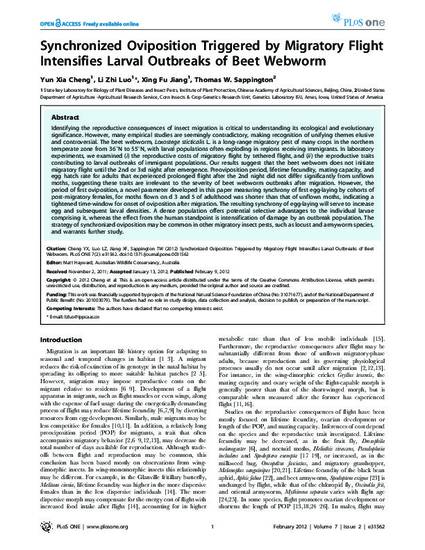
Identifying the reproductive consequences of insect migration is critical to understanding its ecological and evolutionary significance. However, many empirical studies are seemingly contradictory, making recognition of unifying themes elusive and controversial. The beet webworm, Loxostege sticticalis L. is a long-range migratory pest of many crops in the northern temperate zone from 36°N to 55°N, with larval populations often exploding in regions receiving immigrants. In laboratory experiments, we examined (i) the reproductive costs of migratory flight by tethered flight, and (ii) the reproductive traits contributing to larval outbreaks of immigrant populations. Our results suggest that the beet webworm does not initiate migratory flight until the 2nd or 3rd night after emergence. Preoviposition period, lifetime fecundity, mating capacity, and egg hatch rate for adults that experienced prolonged flight after the 2nd night did not differ significantly from unflown moths, suggesting these traits are irrelevant to the severity of beet webworm outbreaks after migration. However, the period of first oviposition, a novel parameter developed in this paper measuring synchrony of first egg-laying by cohorts of post-migratory females, for moths flown on d 3 and 5 of adulthood was shorter than that of unflown moths, indicating a tightened time-window for onset of oviposition after migration. The resulting synchrony of egg-laying will serve to increase egg and subsequent larval densities. A dense population offers potential selective advantages to the individual larvae comprising it, whereas the effect from the human standpoint is intensification of damage by an outbreak population. The strategy of synchronized oviposition may be common in other migratory insect pests, such as locust and armyworm species, and warrants further study.
Available at: http://works.bepress.com/thomas_sappington/27/

This article is from PLoS ONE 7 (2012): 1, doi:10.1371/journal.pone.0031562.